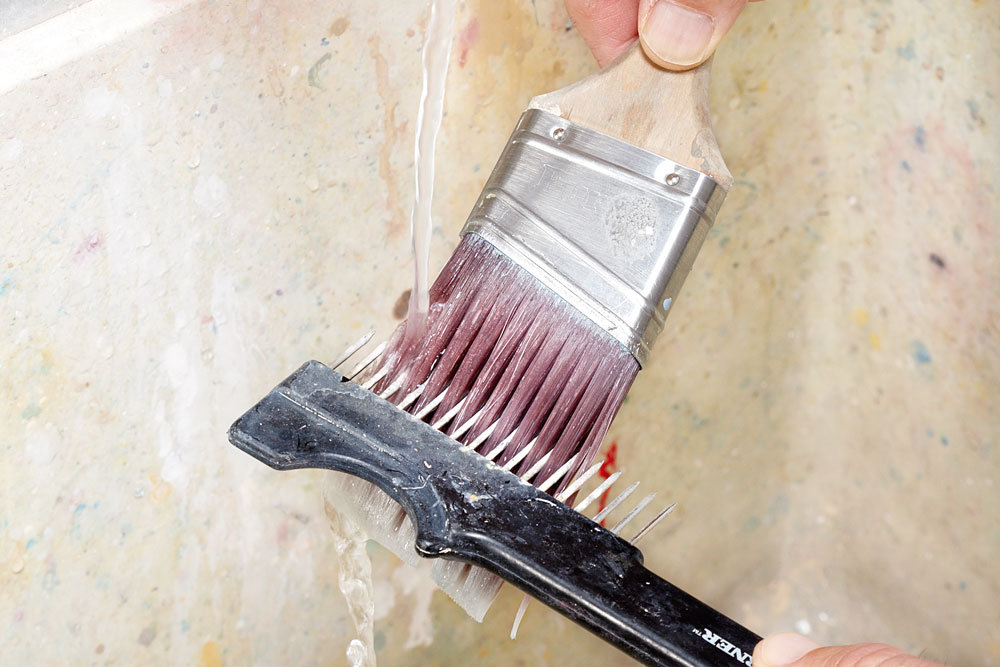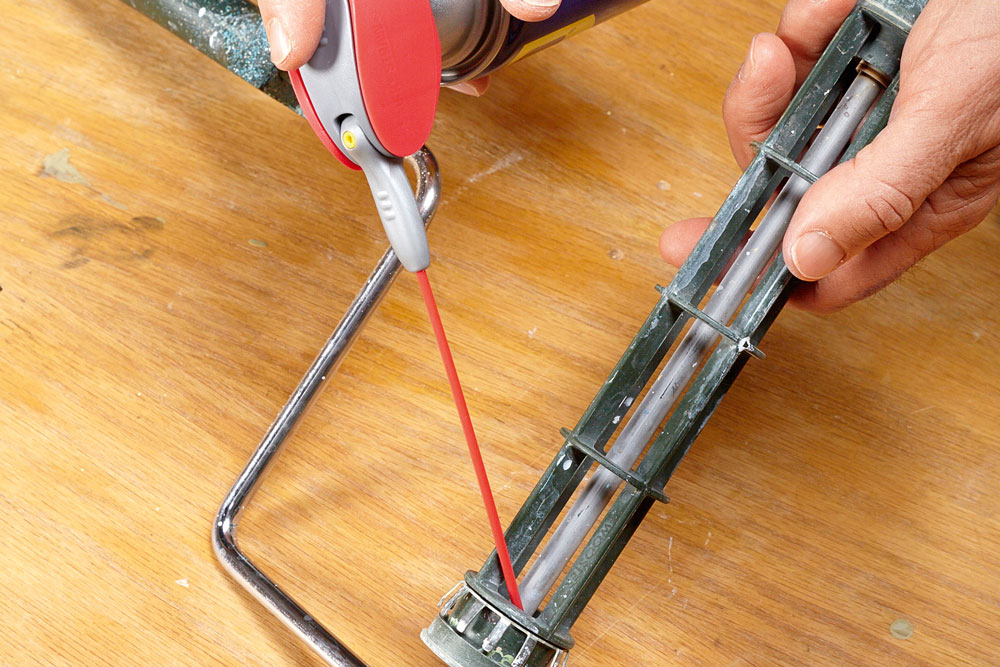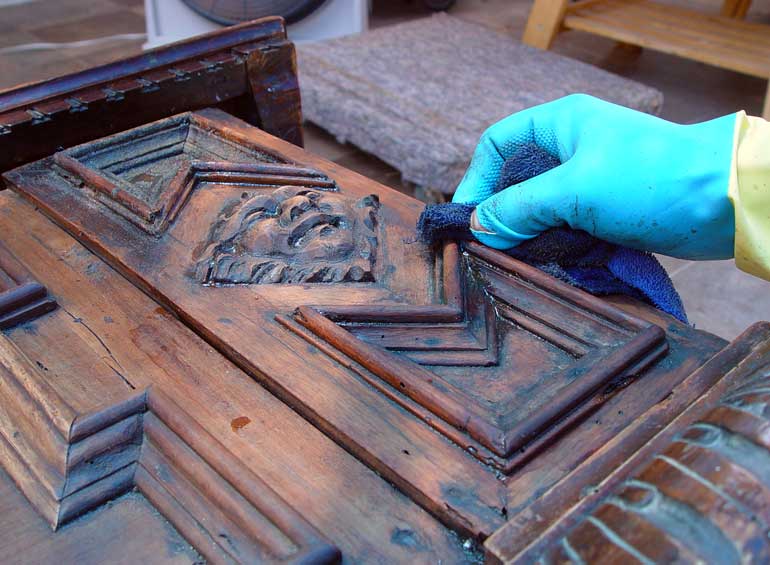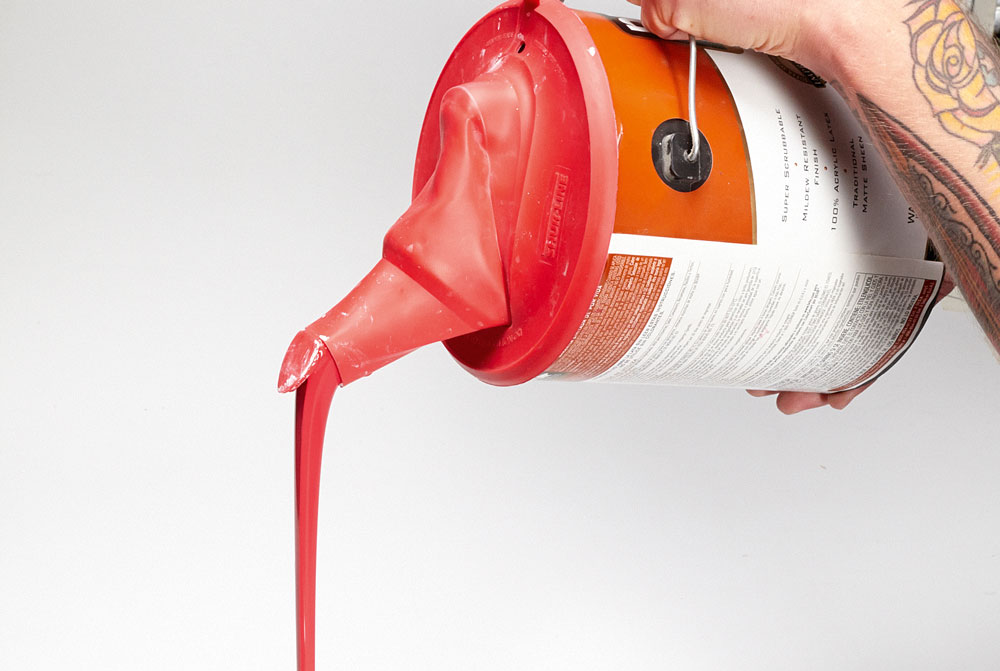Clean brushes with a paintbrush comb

A proper paintbrush comb is the best tool for cleaning a brush instead of just running it under water.
Unlike other brush-cleaning tools, a comb penetrates and cleans deep between the bristles.
Rinsing the brush and using the comb at the same time also prevents the bristles from sticking together, which helps your paintbrush stay soft and retain its shape for longer.
Clean build up on paintbrushes

Paint can work its way up into the bristles covered by the steel ferrule on the brush handle and if you don’t clean it out, it will build up and cause the brush to stiffen.
Comb out the bristles, run water down into the ferrule, then comb again before leaving the brush to dry.
Scrub foam rollers clean

Don’t neglect your roller.
If you don’t rinse it off, you’ll end up with hardened paint inside the bushings or bearings, resulting in a paint roller that ultimately doesn’t roll.
Keeping your painting tools clean doesn’t have to be expensive.
A good trick is to use a $2 pot scrubber from the supermarket.








